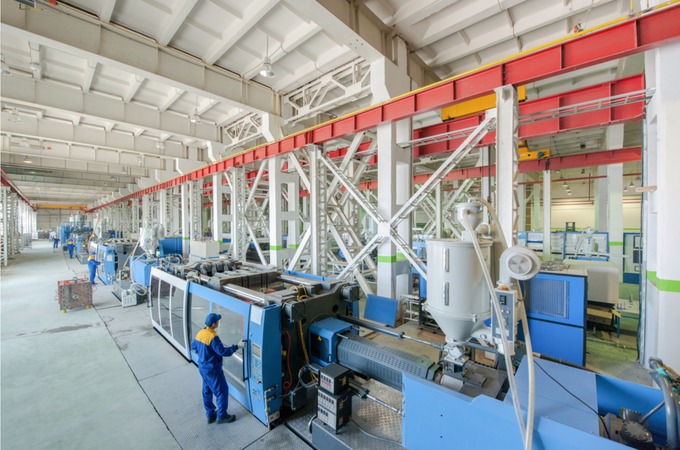Let’s start with a few things you might not know about low-volume manufacturing: First, it covers a broad range of production quantities, typically from 50 to 100,000 pieces. Second, it can be a valuable resource for entrepreneurs getting a new product or business off the ground, and established manufacturers alike. Finally, despite the conventional wisdom that part cost decreases as quantities increase, low-volume manufacturing, when strategically implemented in the right situations, can yield overall cost savings that can make a major difference in your investment costs and your bottom line.
 What Are the Unique Qualities of Low-Volume Manufacturing?
What Are the Unique Qualities of Low-Volume Manufacturing?
It covers different processes: Low-volume manufacturing can be achieved through short-run plastic injection molding, for instance, and it can also refer to 3D printing.
It uses different materials: In low-volume injection molding, hardened, super-durable tool steel is not always necessary to create a mold or tool. “Soft” materials like aluminum can be used instead — and remember, “soft” is a relative term, as aluminum molds can provide plenty of durability depending on your needs.
It bridges a gap: In fact, it’s even sometimes called “bridge manufacturing.” Low-volume manufacturing covers quantities greater than prototype production, but less than full-scale mass manufacturing. As we’ll cover in further detail, this, along with the other factors above, can make low-volume manufacturing a versatile and beneficial solution for your product.
What Does Low-Volume Manufacturing Entail?
As mentioned above, low-volume manufacturing does not refer to one specific production process. A number of different processes are conducive, both practically and economically, to low-volume manufacturing. We’ll focus on two of them: low-volume injection molding and 3D printing.
Low-volume injection molding: A layperson couldn’t be blamed for almost considering “low-volume” a misnomer, since for injection molding, it usually refers to quantities up to 100,000 parts. It makes more sense when you consider high-volume runs in the tens of millions of pieces, of course. That 100,000 cutoff is just about where an aluminum mold becomes less viable than making the full, hardened tool steel investment. Why aluminum? It can be easily formed and machined to the requirements of your product; it provides the durability necessary for that broad, 50- to 100,000-piece range; and it’s less costly and time-consuming to use for a mold (more on that later).
3D printing: Just as useful as it is for prototype quantities, 3D printing can be a viable process for low volumes up to the hundreds of parts, depending on the complexity of the form and the equipment in use. For the right product, 3D printing materials can provide the physical qualities (like strength, aesthetic, flexibility and more) for production uses — not just for prototypes.
What Are the Benefits of Low-Volume Manufacturing?
Now that you have a strong background on what low-volume manufacturing is, and what sets it apart from other manufacturing quantities, we can explore the most important part: how it can benefit you.

Cost: As mentioned above, when all factors are considered, higher production volumes don’t necessarily lead to lower overall costs per part. If it’s not viable or necessary for your product to start with a million-piece run, you might just be throwing money away even as you pursue a lower upfront quote. Why? For starters, a tool steel mold might not be necessary if you don’t expect to produce more than 100,000 parts in the near future. The price difference between material and manufacturing for tool steel versus aluminum molds is not negligible, and can have a big impact on your overall cost per part, as well as your bottom line.
Lower minimum orders: What’s more, aside from unnecessarily expensive molds, most high-volume manufacturing service providers have very high minimum order requirements — potentially a half-million or more. If you don’t need that quantity right away (or ever), you’re probably not going to see much of a savings, even with a lower per-part cost — your total outlay might even exceed your current resources (or the realities of the balance sheet). It’s important to look at the nitty-gritty details of every aspect of your production process, but it’s also important to know when to take a step back and look at the big picture. That’s where overall cost comes into play, which is your end cost per part, all production factors taken into account (not just manufacturing itself).
Time to market: Those cost savings when you choose an aluminum mold over a tool steel mold go hand in hand with another benefit: A much quicker turnaround time to get your mold produced. The relatively softer aluminum material makes for easier mold creation, and the lower production requirements mean that durability enhancers like hardening aren’t required. All of this adds up to getting the mold to you or your low-volume manufacturing facility much more quickly, letting you start producing and delivering your product.

Inventory management: The pitfalls of seeking the lowest upfront cost per part, and committing to higher quantities than necessary, can wreak further havoc on your bottom line after production. Excess inventory continues to be costly in terms of storage space, lost productivity, and even the potential for the need to simply dispose of unsold product. Low-volume injection molding, when appropriate for your delivery commitment and sales goals, can address the consequences of excess inventory by letting you work within a closer range to the quantities that you’ll actually need. What’s more, 3D printing is often a viable solution for production products made to order, depending on the specifics of your piece — meaning you’ll never have to worry about inventory.
A bridge for scale: As a bridging process, low-volume manufacturing offers a number of benefits: It allows you to bring a viable product to production, after prototyping, without a huge quantity commitment. You can get an enormous amount of value-add from low-volume manufacturing: you can fine-tune the process and the product, manage your inventory more closely, and get a similar-quality product at a lower cost. You can also begin the more lengthy tool steel mold creation process even as you’re producing and selling products created via low-volume manufacturing, effectively cutting your lead time down greatly.
All of these aspects of low-volume manufacturing can benefit you in multiple ways: lower your costs, impact your bottom line, fulfill your orders more quickly, and keep your customers happy. Be sure to research and determine the needs of your product and business to decide if low-volume manufacturing is the right choice for you.


